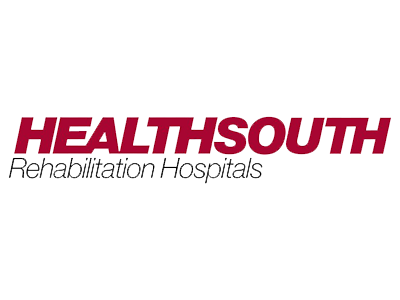

Annual Testing and Recertification of Isolated Power Systems and Line Isolation Monitors in accordance with NFPA 99
Isolated Power Systems and their accompanying Line Isolation Monitors are increasing in popularity. What began as a safety measure for flammable anesthetic agents has grown to become almost a necessity for wet procedure locations, operating rooms, and other critical areas of a healthcare environment.
If you have isolated power systems installed in your healthcare facility, by now you probably understand that these systems must be verified by a trusted vendor at least once per year. This is essential to maintain compliance with the National Fire Protection Association document NFPA 99, which is part of what is known as the Fire Code.
Our service representatives are ready to perform your annual testing of Isolated Power Systems and Line Isolation Monitors. We regularly schedule this service to be performed in the evenings, to place a minimum burden upon your schedule. NFPA 99 states that these isolated power systems and the accompanying line isolation monitors must be tested once every twelve months.
Here you will find the most frequently asked questions and answers concerning testing and recertification of isolated power systems and line isolation monitors. Contact us via the form below to schedule the annual inspection and recertification of your isolated power systems.
A line isolation monitor (LIM) is a device used in healthcare facilities to continuously monitor the isolation of electrical medical equipment from the power source. This is an important safety feature, as it helps to prevent electrical shock and other hazards to patients, staff, and equipment. In accordance with the National Fire Protection Association's (NFPA) standard NFPA 99, regular testing of these devices is necessary to ensure their proper functioning.
The first step in testing a line isolation monitor is to visually inspect the device and its connections. This includes checking for any physical damage or signs of wear, as well as verifying that all necessary safety guards and labels are in place. The device should also be inspected for proper grounding and bonding.
Next, the LIM should be tested for proper operation. This can be done by applying a test voltage to the device and measuring the current that flows through it. The test voltage should be within the range specified by the manufacturer, and the current flow should be within the limits specified in NFPA 99.
The device should also be tested for its ability to detect a ground fault. This can be done by applying a ground fault to the device and observing the response of the LIM. The device should trip and indicate the presence of the ground fault in a timely manner as per manufacturer's specifications.
It's also important to test the LIM's ability to indicate when the isolation is lost. This can be done by simulating a loss of isolation and observing the LIM's response. The device should trip and indicate the loss of isolation in a timely manner as per manufacturer's specifications.
Additionally, it is important to ensure that the LIM is properly calibrated. This can be done by comparing the readings of the device with those of a known standard. The LIM should be calibrated annually and more frequently if there are any deviations.
Finally, the entire system should be tested under simulated emergency conditions, to ensure that it is able to provide power to the essential loads during an actual outage. This test should include all of the hospital's critical loads, such as life support systems, and should be done in coordination with the hospital's emergency management team.
Regular testing of a hospital's line isolation monitor is essential to ensure that it is able to provide reliable and safe power during an outage. By performing visual inspections, operation tests, ground fault detection tests, loss of isolation tests, calibration, and emergency simulations, healthcare facilities can be confident that their line isolation monitor will function properly when they are needed most, in accordance with the guidelines set by NFPA 99.

Line Isolation Monitor Testing in accordance with NFPA99
Isolated Power Systems and their incorporated Line Isolation Monitors must be tested once per year, in accordance with NFPA99. We can perform your annual inspection and recertificvation, and provide you with the documentation needed to maintain compliance with NFPA99 and Joint Commission regulations.
Call us at (424) 204-2382 for a free estimate
Below are some frequently asked questions and aswers concerning Isolated Power System and Line Isolation Monitor inspection requirements, in accordance with NFPA99.
Isolated power systems are electrical systems that are used in operating rooms and other wet locations throughout many hospitals. This system provides for additional safety against hazardous ground fault hazard.
Section 3.3.89 of NFPA99 defines an Line Isolation Monitor Testing Services as A system comprising an isolation transformer or its equivalent, a line isolation monitor, and its ungrounded circuit conductors.
The isolated power system incorporates the use of monitors, called Line Isolation Monitors. These are informally called LIMs by technicians in the field. The line isolation monitor replaces the circuit breaker. It will alarm, instead of tripping a circuit breaker, during most ground-fault occurrences.
Section 3.3.9 of NFPA99 defines a Line Isolation Monitor as A test instrument designed to continually check the balanced and unbalanced impedance from each line of an isolated circuit to ground and equipped with a built-in test circuit to exercise the alarm without adding to the leakage current hazard. In an isolated power circuit, a ground fault would result in an alarm, but power would not be interrupted.
Section 6.3.2.2.1.2(C) of NFPA99 addresses isolated power with regard to Critical Care Areas and states Where used in locations such as critical care areas, isolated power panels shall be permitted in those locations.
Section 3.3.184 of NFPA99 defines a Wet Procedure Location as The area in a patient care room where a procedure is performed that is 'normally subject to wet conditions while patients are present', including standing fluids on the floor or drenching of the work area, either of which condition is intimate to the patient or staff.
Section 6.3.2.2.8 of NFPA99 addresses Wet Procedure Locations.
Section 6.3.2.2.8.1 of NFPA99 states Wet procedure locations shall be provided with special protection against electric shock.
Section 6.3.2.2.8.4 of NFPA99 states Operating rooms shall be considered to be a wet procedure location, unless a risk assessment conducted by the health care governing body determines otherwise.
This is the most controversial section. A risk assessment by the health care governing body can in fact deem an operating room not to be a wet procedure location. This would be contingent on interpretation of the mopping of the floor which occurs between cases as "drenching", as defined in Section 3.3.89 above.
Section 6.3.2.2.8.7 of NFPA99 states Operating rooms defined as wet procedure locations shall be protected by either isolated power or ground fault circuit interrupters.
Section 6.3.2.2.8.7 of NFPA99 states "Operating rooms defined as wet procedure locations shall be protected by either isolated power or ground fault circuit interrupters.
Section 6.3.2.2.8.6 of NFPA99 states The use of an isolated power system (IPS) shall be permitted as a protective means capable of limiting ground-fault current without power interruption. When installed, such a power system shall conform to the requirements of 6.3.2.6.
Section 6.3.2.2.9 of NFPA99 addresses Isolated Power
Section 6.3.2.2.9.2 of NFPA99 states The system shall be permitted to be installed where it conforms to the performance requirements specified in 6.3.2.6.
Section 6.3.2.6.2.2 of NFPA99 addresses Line Isolation Monitors
Section 6.3.2.6.3.2 of NFPA99 states The monitor shall be designed such that a green signal lamp, conspicuously visible in the area where the line isolation monitor is utilized, remains lighted when the system is adequately isolated from ground; and an adjacent red signal lamp and an audible warning signal (remote if desired) shall be energized when the total hazard current (consisting of possible resistive or capacitive leakage currents) from either isolated conductor to ground reaches a threshold value of 5.0 mA under normal line voltage conditions. The line isolation monitor shall not alarm for a fault hazard current of less than 3.7 mA.
This is interesting, as many of the Line Isolation Monitors still in use are older, often analog units that are set to alarm at only 2 mA. These units must be replaced immediately, as it is a violation of code to use them.
Section 6.3.3.3 of NFPA99 addresses Performance Criteria and Testing for Line Isolation Monitor Testing Services.
Section 6.3.3.3.2 of NFPA99 Line Isolation Monitor Tests states The line isolation monitor (LIM) circuit shall be tested after installation, and prior to being placed in service, by successively grounding each line of the energized distribution system through a resistor whose value is 200 x V (ohms), where V equals measured line voltage. The visual and alarms shall be activated.
Section 6.3.4.1 of NFPA99 addresses Maintenance and Testing of the Electrical System.
Section 6.3.4.1.4 of NFPA99 states The LIM circuit shall be tested at intervals of not more than 1 month by actuating the LIM test switch. For a LIM circuit with automated self-test and self-calibration capabilities, this test shall be performed at intervals of not more than 12 months. Actuation of the test switch shall activate both visual and audible alarm indicators.
Section 6.3.4.2 of NFPA99 addresses Record Keeping.
Section 6.3.4.2.1.1 of NFPA99 states A record shall be maintained of the tests required by this chapter and associated repairs or modification.
Section 6.3.4.2.1.2 of NFPA99 states "At a minimum, the record shall contain the date, the rooms or areas tested, and an indication of which items have met, or have failed to meet, the performance requirements of this chapter.
Section 6.3.4..2.2 of NFPA99 Line Isolation Monitor Testing Services (Where Installed) states A permanent record shall be kept of the results of each of the tests.
Here are the reasons to keep or install Isolated Power in all Operating Rooms:
- Reduced Shock Hazard
- Continuity of Power
- Line Noise Reduction, the transformer acts as an electrical filter.
- Advance warning system of what their equipment condition is.
- Reduced Fire Hazard
- Extra level of protection will keep down liability claims.
Here are some reasons why you should contract with us for your Line Isolation Monitor Testing and recertification services:
- We have been in the industry for over 40 years
- We provide complete documentation of your isolated power system leakage readings and alarm threhold limits
- We perform our inspection services in the evenings and/or on the weekends, so as not to disturb your surgery schedule
- Our service documentation will keep you in compliance with NFPA99 and Joint Commission accreditation requirements
BiomedRx provides service coverage in all 50 states in the United States, plus Canada, and throughout Latin American and the Caribbean. We cover the entire Western Hemisphere.
We have experience servicing isolated power systems and line isolation monitors manufactured byt he following companies:
- Amsco
- Auth
- Bender
- Crouse Hinds
- Edwards
- Electromagnetic Industries (EMI)
- Federal Pacific
- Federal Pioneer
- General Electric
- Hevi-Duty
- Hill-Rom
- Hospital Systems
- Isotrol
- Measurement Engineering Limited (MEL)
- Post Glover
- Russell & Stoll
- Square D
- Grainger
- Schneider
Yes. We can quote you on a new isolated power system installation, or an upgrade from your current system. Send us pictures of your current system to inquire.
Feel free to contact us using the email form below, or call us at (424) 204-2382. You will need to make sure we are registered as a vendor to work in your facility. Once you send us the quantities of isolated power systems/line isolation monitors in use in your facility, we will provide you with a quote. Once we have a purchase order, we can schedule service.
We offer a complete array of healthcare technology management services, including:
- Medical Equipment Repair and Maintenance
- Hospital Information Technology
- In-service Education and Service Training
Our clients























Testimonials

"For the past 30 years, BiomedRx has been the only company we trust to provide repair, calibration, and preventive maintenance services on our medical equipment assets. BiomedRx technicians are knowledgeable about every modality of diagnostic and therapeutic medical equipment."
- Charles Long M.D.

"BiomedRx technicians provide our surgery center with excellent biomedical equipment maintenance services. They have a quick response time, and are willing to schedule service after hours. We highly recommend BiomedRx for your medical equipment repair and maintenance needs."
- Barbara Stevens R.N.

"BiomedRx takes care of our medical device installation, repair, calibration, and preventative maintenance inspections. They also do our annual inspection and recertification of isolated power systems and line isolation monitors. We are very happy with BiomedRx service."
- John Butler, Facility Administrator




















